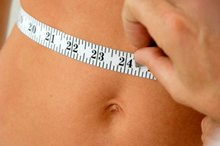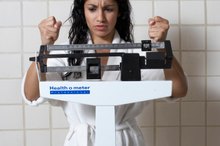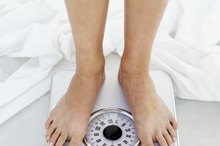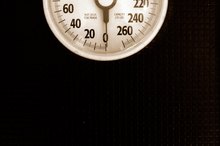Weight Gain From Pilates
From professional dancers to casual exercisers, people of all fitness levels use Pilates to tone muscles and build core strength. Because the activity burns significant calories, you may even do Pilates to lose weight -- which makes it especially surprising when the opposite occurs. Weight gain is common when beginning an exercise routine, however, and monitoring calorie intake can help ensure that the weight comes off. if you're new to exercise, see your physician before starting a new Pilates program.
Muscle Gain
One of the main draws of Pilates is its ability to build lean muscle mass, promoting strength and good posture. However, added muscle means added weight -- and because a square inch of muscle weighs more than a square inch of fat, you may gain weight even if you burn body fat. If this is the case, you may still lose inches, causing your clothing to fit more loosely despite the numbers on the scale.
Water Weight
Do You Lose Pounds or Inches First?
Learn More
A sudden spike in weight may indicate water retention, which is especially likely if you don't drink enough fluid before, during and after your Pilates sessions. That's because when your body is dehydrated, it tends to conserve water rather than eliminate it. Plus, muscle-strengthening exercises like Pilates cause small tears in your muscles, particularly at the start of a new routine, which also leads to fluid retention. The extra liquid in your muscles should disappear within a few days.
Fat Gain
Pilates takes energy, and your body may feel hungrier than normal after the intense physical activity. If you don't watch your food intake, you may find yourself overeating to compensate -- which can lead to increased body fat. To avoid gaining weight from fat, eat only as many calories as you consume throughout the day. Most moderately active people can estimate calorie needs by multiplying their weight in pounds times the number 15, according to Harvard Medical School. For example, a 145-pound person probably burns about 2,175 calories per day. To lose about a pound of fat per week, subtract 500 from that number. The person in the example would probably lose weight eating 1,675 daily calories.
Weight and Health
Advantages & Disadvantages of a Sauna Suit
Learn More
Your body reacts differently to muscle gain compared to fat gain. While adding muscle results in greater strength and overall physical fitness, packing on too much body fat can increase your risk of diabetes and cardiovascular disease. Therefore, don't be alarmed if you eat a healthy diet but add a few pounds of muscle after embarking on your Pilates program. If you feel you may be gaining fat -- particularly if you're overweight -- request a body composition test from your doctor. If fat levels are indeed a concern, it's time to change your diet and possibly up your Pilates frequency or add other physical activities to your routine.
Related Articles
References
Writer Bio
Nina K. is a Los Angeles-based journalist who has been published by USAToday.com, Fitday.com, Healthy Living Magazine, Organic Authority and numerous other print and web publications. She has a philosophy degree from the University of Colorado and a journalism certificate from UCLA.









